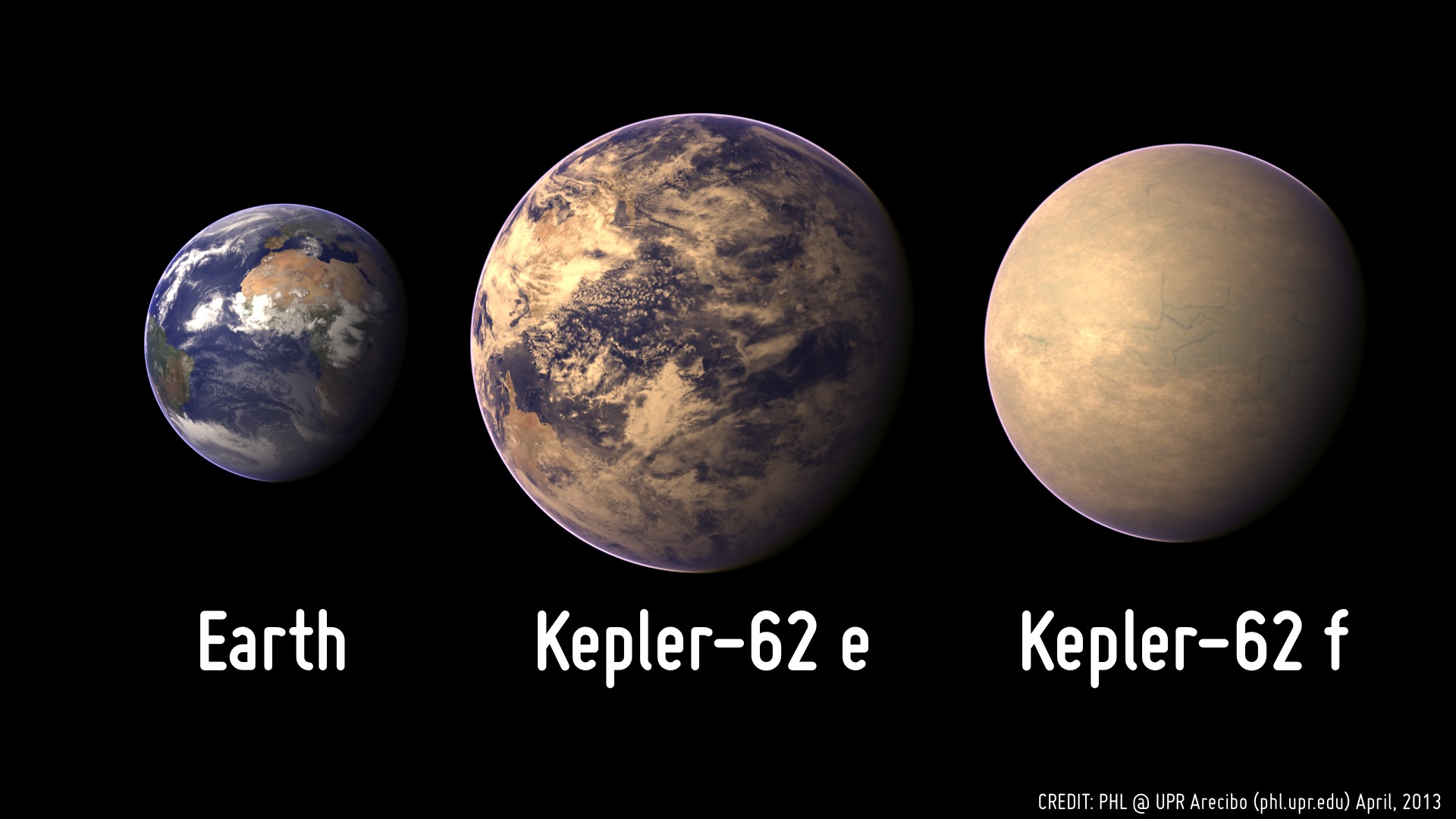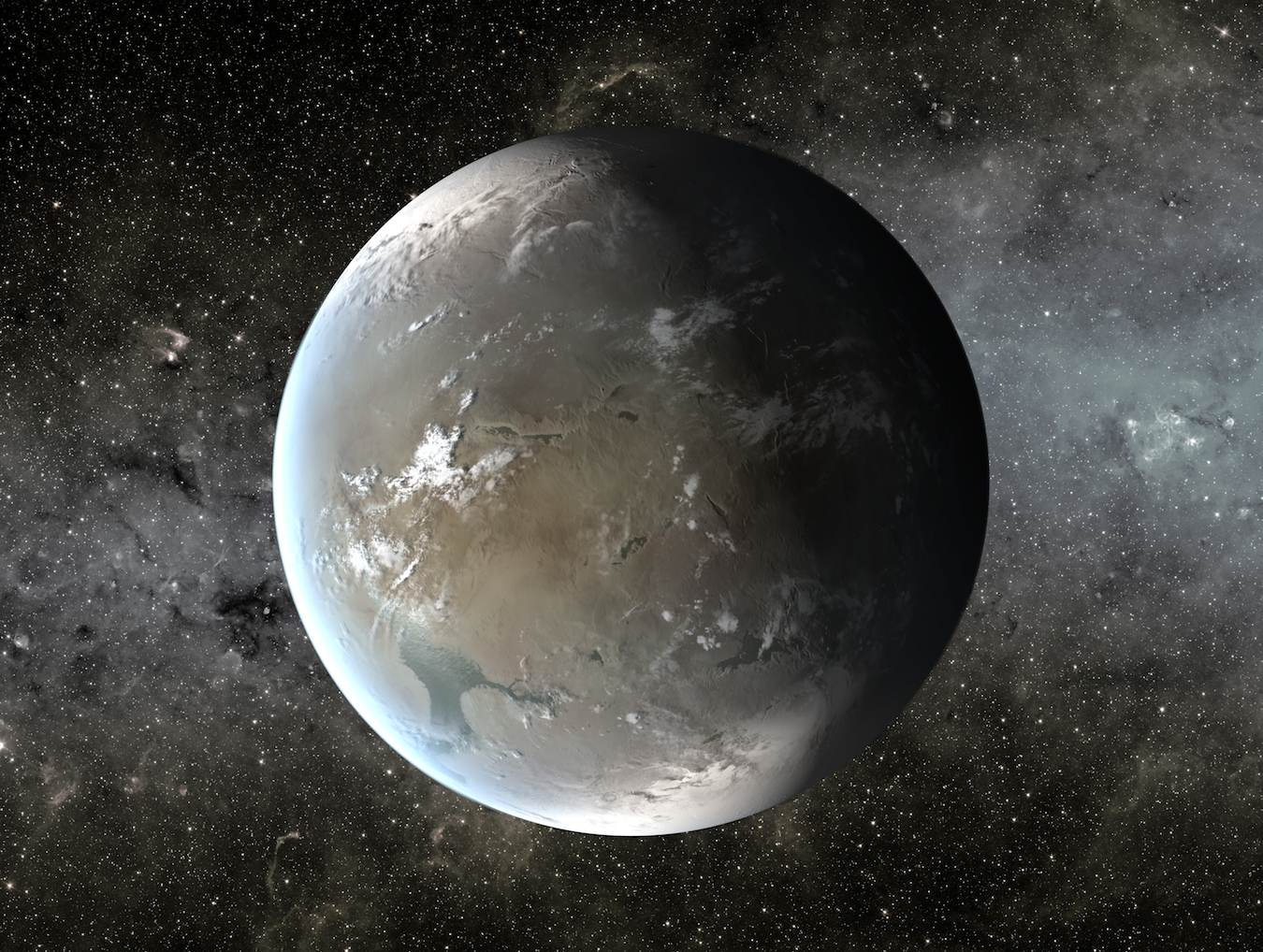 |
|
|
Spring 2013 UWAB Faculty Member Eric Agol Discovers Smallest Potentially Habitable Exoplanet Yet! Last week, NASA’s Kepler space telescope team announced the discovery of three “super-Earth” sized planets in the habitable zone, or the area surrounding a star where liquid water may potentially be found. One of these planets, Kepler-62f, was discovered by UWAB’s very own Eric Agol—an associate professor in the UW astronomy department—with help from postdoctoral researcher, Brian Lee. With its relatively small size, 1.4 times the Earth’s radius, and its position squarely within the habitable zone of its star, Kepler 62f is arguably the most potentially habitable planet yet discovered. The paper documenting the discovery was published on April 18th, 2013 in Science Express, the online version of the journal Science. Kepler detects planets by looking for “transits”, or the small dip in stellar brightness caused by a planet as it passes in front of its host star. “Kepler takes digital images of the sky every six seconds, then adds them up over thirty minutes and sends back a portion of those pictures (cutouts, or ‘postage stamps’ around 150,000 stars).” Agol says. “Then, these are summed up to plot the total amount of light (literally, photons) received from each star over a thirty-minute period. If this shows a drop over a few hours that repeats every orbital period (at least three times for confirmation), then we know that a planet has passed in front of the star causing it to dim”. Using a new algorithm for searching the Kepler data, Agol found the third transit of 62f, which confirmed it as a planet. At the time of Agol’s discovery, several other planets had already been found orbiting Kepler 62. A group of researchers led by William Borucki (NASA Ames) were close to announcing Kepler-62 b, c, and d, when Agol contacted them and informed them they had missed one. Kepler-62f’s host star is classified as a K2 dwarf, making it both smaller and dimmer than our sun. Because of this, its habitable zone is closer in than our sun’s, and Kepler-62f has a year of just 267 (Earth) days. With a diameter only 40% larger than the Earth’s, Kepler-62f is the smallest planet found in the habitable zone of another star to date. The other potentially habitable planet found in the Kepler 62 system, Kepler-62e, is roughly 60% larger than Earth, while the super-Earth found in the second system, Kepler-69c, is 70% larger than Earth. While other near Earth-sized planets have previously been found by Kepler, they have all been too close to their stars to be considered suitable for life. Of all known exoplanets, Kepler-62f is unique in that it is both closest in size to the Earth, and also likely to be temperate. 
While the size of Kepler-62f is known, its mass and composition have yet to be determined. Rory Barnes, a UWAB astronomer who studies the dynamics of planetary systems and the consequences they may have for habitability, says: “We don't know if they are rocky worlds yet (as opposed to gas giants), so we can only speculate if they can support life. If they are rocky, then the inner planet (e) is tidally locked to its host star, and may require some reflective clouds to keep the temperature down, but it is a viable candidate for habitability. The outer planet (f) is smaller and probably not tidally locked, which works in its favor. It receives less stellar radiation than the Earth, and so needs more greenhouse gases like carbon dioxide to be habitable, which is unknown, but perfectly plausible. As I told Professor Agol, ‘Planet f looks fantastic!’ ” If we compare Kepler-62f to other well-studied planets similar in size, it seems plausible that the world is indeed a terrestrial one, but without more information on the planetary properties, including its density and composition, we can’t know for sure. In the future, however, the planet’s mass could be determined by analyzing changes in the timing of Kepler 62f’s transits, due to gravitational interactions occurring between it and the other planets in the system, a technique also pioneered by Professor Agol. “Even though we don’t have detailed information on the planet’s properties, and probably won’t for quite some time, Kepler 62f has already jumped through three significant hoops on its way to being considered a habitable world. It’s very close in size to the Earth, it’s at the right distance from its parent star to potentially support liquid water, and it’s unlikely to be experiencing tidal locking”, says UWAB Director and exoplanet scientist Prof. Victoria Meadows. “This is likely the first discovery of many, and a very exciting step in Kepler’s primary mission to determine just how common habitable planets are in the Universe.” Photos: (Top) Artist’s conception of Kepler-62f. Image credit: NASA. (Bottom) A comparison of Kepler-62e and f with Earth. |
|

